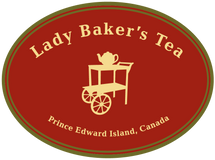Wherever You Are, There is Tea
In 2015, I had the experience of attending the first Texas Tea Festival in Austin. One of the workshops that tea-filled day was about a tea tradition of which I had never heard: the East Frisian Tea Ceremony.
Tea finally came to Europe at the beginning of the 17th century by ship via the Dutch East India Company. Deep within the German North Sea coast is the region of East Frisia. Part of the region is in Dutch territory and thus there is Dutch influence. The ceremony itself is more of a local tradition which has not made its way into the rest of Germany.
It is definitely a unique cup of black tea, one which my Dad would have embraced because of the sweetness of the brew. We used to say that Dad had tea with his sugar!
Apparently the Frisians outdo the British when it comes to drinking the most tea. In a local dialect of East Frisia, Teetied is at 3 o'clock. The type of tea is a blend called East Frisian Tea which consists of mostly a dark, rich, malty Assam. There are three ingredients. First a very hard lump of clear crystallized sugar called kluntjes (pronounced kloont-yers) is placed in the cup. Each lump is meant to last several cups. Then the strong tea is poured on top of the sugar. You will hear a crackle as the tea hits the sugar! Last, real cream, produced to a certain consistency unavailable outside of East Frisia is slowly poured from the edge of the cup, forming a little cloud on top. Do not stir! The cup is small and so you can drink it in three gulps savouring the three flavours of the cream, then the tea and last the sweetness.

Photo source: www.europupils-in-business.eu
At the Texas Festival, one little cup of this tea was a disappointment only because I wanted more! I found it to be a happy relief when they offered a second and a third and then I was told I could finish off the kloontje in my mouth. It is a must that due to the hospitable nature of the Frisians, a visitor should accept three cups before declining. When finished, you put your spoon into the cup or turn your cup upside down on the saucer.
Another experience of mine was a memorable trip I took to India in 2015 where a group of us visited several tea farms in Darjeeling and Assam. This is where I tasted a delicious cup of chai. In India, serving tea is a common thing to do any time of day. Like many other cultures, hospitality is at the core of the activity.
In the 16th century, though, tea was prepared as a vegetable dish using tea leaves, garlic and oil as well as brewing it as a beverage with sugar and milk. In all our stops on my trip to India, the tea was sweet. The masala (mixture of spices) chai (tea) we had was boiled in milk and sugar and would be more like what I call a chai latte.
Once the mixture of spices was believed to be an Ayurvedic mix for remedial cleansing. It was prepared in many ways and with a variety of spices. The recipes were never consistent from one village to the next. And that is still the case today!
With many tea farms producing black teas, the masala spices were a natural addition and the masala chai as we know it today was born. It is now recognized as India's national drink. It is a very popular offering at our Farmers' Market Tea Bar. We have nicknamed it our Cha Cha Chai!

Image source: reubensinha.com
The spice mixture generally includes a combination of ginger, cardamom, cinnamon, cloves, black and or white pepper. The daily consumption of Masala Chai had made India the world's foremost tea consuming nation.
In India along the streets you can see tea vendors (whallas) preparing masala chai over an open fire. They pour it from a height into their own bisque-fired clay cups called chullarhs and after the tea has been drunk, the clay cup is smashed to the ground. Though an intriguing tradition, I'm glad that is not what my customers do at the market!
Would you like to try your very own masala chai? Here's a recipe that you can use as a base. Make it especially your own by mixing your preferences of spices in the amounts you would like.
Masala Chai
Ingredients: 2 cardamom pods, 1 cinnamon stick,slightly crushed, 1/4 tsp ground ginger, 1/8 tsp freshly ground pepper, 2 whole cloves, 3 cups water, 1/2 cup milk, 2 tbsp black tea, 3 tbsp granulated sugar (more or less).
Lightly crush cardamom and cinnamon in a mortar. Put water in a pan. Add the cardamom, cinnamon, ginger, pepper and cloves. Bring to a boil and simmer for 5 minutes. Remove from heat and let stand for 3-4 minutes to allow spices to infuse. Add sugar and milk and bring to a boil. Remove from heat and add tea leaves. Cover and steep 4-5 minutes. Strain into cup.
There are so many interesting tea customs around the world! The remarkable camellia sinensis plant has found its way into so many lives. Does your tea time have any of your own personal touches? Do you 'customize' your own practice of celebrating the drink? However you take your tea, remember you are a part of a larger global tea culture...and that's worth celebrating!

Leave a comment
Please note, comments must be approved before they are published